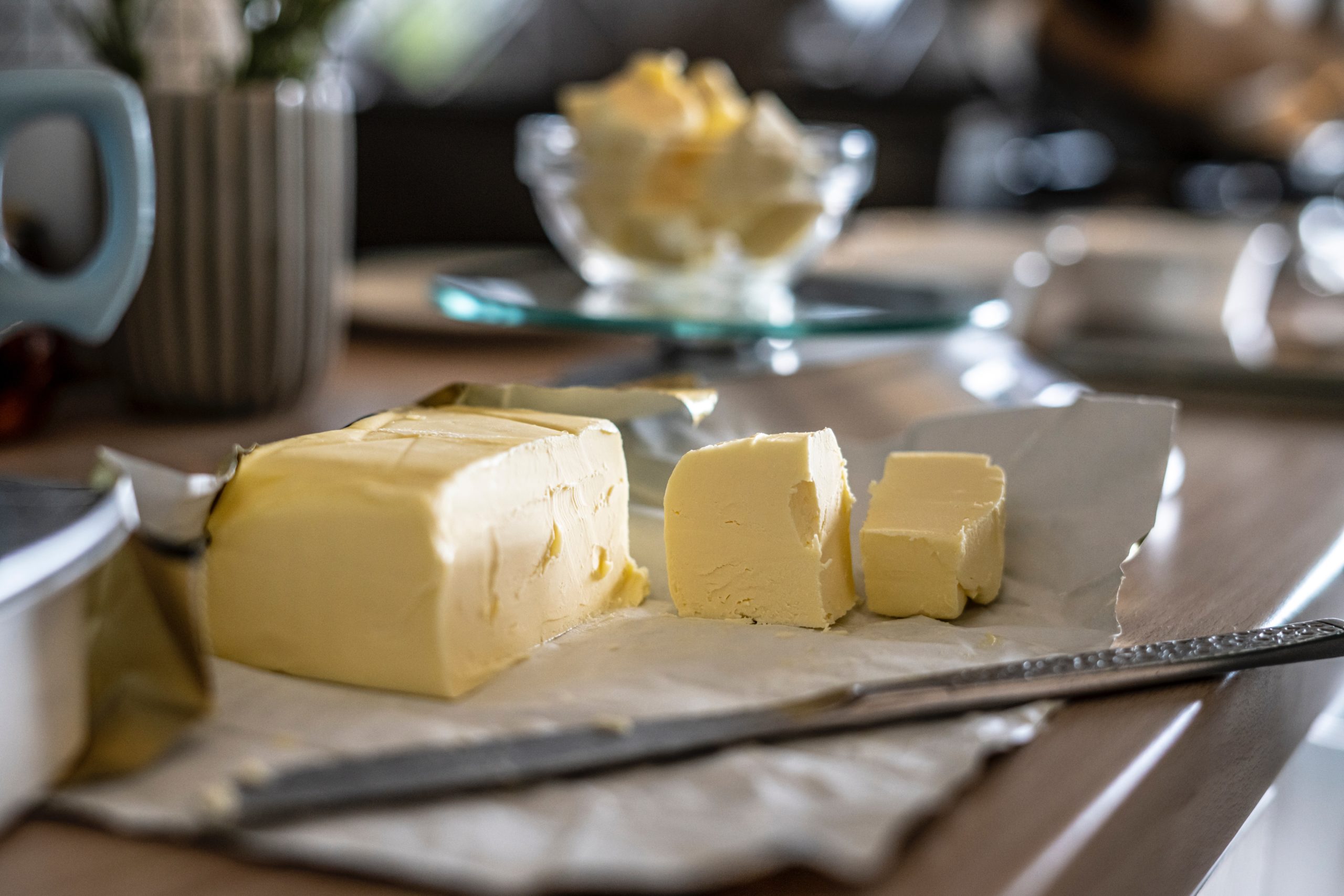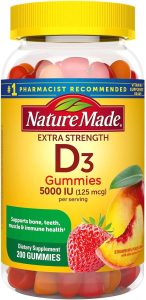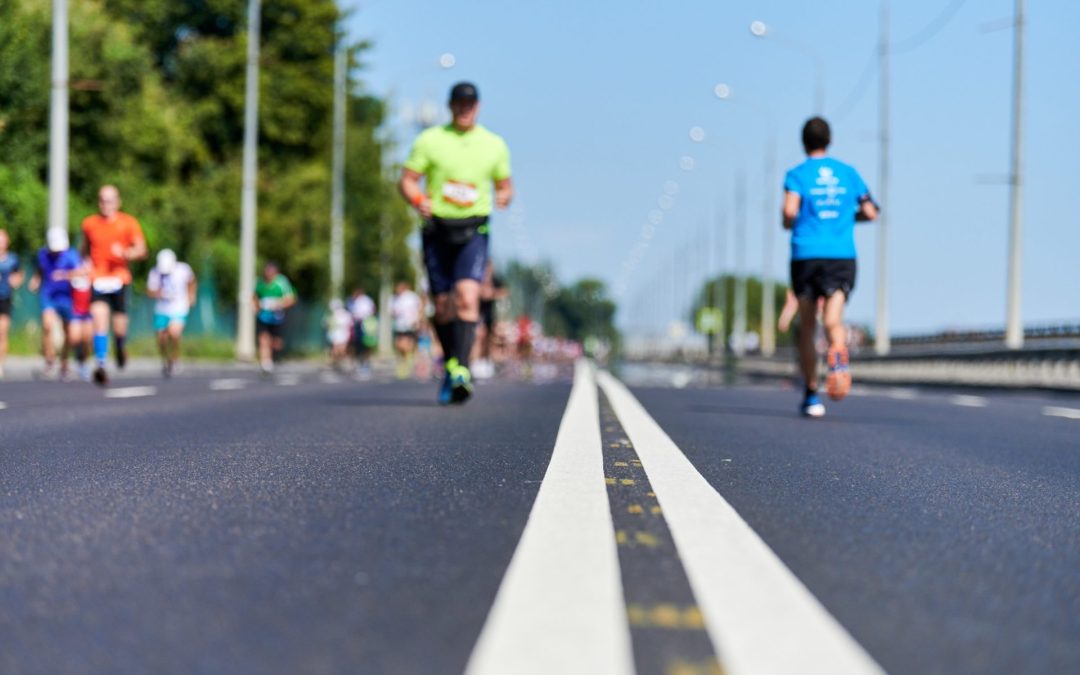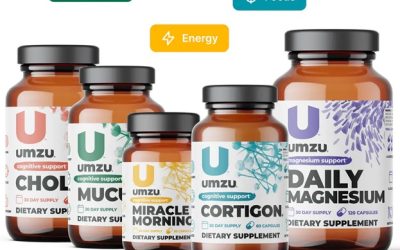If you’re looking to make well-informed decisions about your health and wellness, it’s essential to understand the basics of Cholesterol. Most people know that Cholesterol can cause heart disease and is one of the leading causes of heart attacks, but many people don’t know what it is or how it works in the body.
This article will break down everything you need to know about Cholesterol – from its effects on our bodies to prevention tips and treatments for elevated levels.
You’ll also learn questions you can ask your doctor during a checkup if you think your classes need to be lowered. Read on for crucial information that could save your life!
What is Cholesterol?
Cholesterol is a waxy, fat-like substance in the bloodstream in all our cells. It’s made from the liver, but we can also get it from our food. Cholesterol is essential for maintaining good health, as it helps with digestion and absorption of specific vitamins, hormones, and other substances.
However, when cholesterol levels become too high, this can lead to several serious health problems, including heart disease and stroke. High Cholesterol in cell membranes also constricts arteries and leads to other conditions such as diabetes, obesity, and high blood pressure.
Types of Cholesterol
There are two main types of Cholesterol:
- LDL (low-density lipoprotein)
- HDL (high-density lipoprotein)
LDL vs. HDL
Low-density lipoprotein (LDL) can clog up your arteries, leading to plaque buildup. This can increase your risk for heart attack and stroke.
High-density lipoprotein (HDL) helps remove extra Cholesterol from your body. HDL works by carrying LDL away from the blood vessels and back to the liver, where it can be broken down and eliminated.
Good Cholesterol
Good Cholesterol, also known as HDL (high-density lipoprotein), is good for you because it helps remove extra Cholesterol from your body and carries it back to the liver, where it can be broken down and eliminated. HDL is sometimes referred to as “good cholesterol” because having higher levels of HDL can reduce your risk for heart attack and stroke.
Bad Cholesterol
Bad Cholesterol, also known as LDL (low-density lipoprotein), is bad for you because too much can clog up your arteries, leading to plaque. This can increase your risk for heart attack and stroke.
What Causes High Cholesterol?
High Cholesterol is a common health condition caused by having too much of a specific type of fat, called “LDL cholesterol,” in the blood. It can be caused by eating high-fat foods (especially saturated fats) with a certain kind of sugar or starch, smoking, and being overweight.
It can also be genetic in some cases. It is essential to recognize the risk factors associated with high cholesterol so that it can be appropriately managed and lead to a healthy lifestyle.
A diet rich in fruits, vegetables, and lean proteins, coupled with regular exercise should keep Cholesterol at normal levels.
If necessary, medication prescribed by healthcare professionals may also need to be taken alongside lifestyle changes to ensure that it is kept within safe levels.
Several factors, including lifestyle factors such as smoking, unhealthy eating habits, and lack of exercise, can cause high Cholesterol. Genetics, certain medical conditions, and medications can also cause it.
Normal Cholesterol Levels
Normal cholesterol levels vary depending on age and gender, but total Cholesterol should generally be below 200mg/dL. LDL levels should be below 100 mg/dL for optimal health. HDL levels should be above 40 mg/dL for men and 50 mg/dL for women.
How to Lower Cholesterol
Lowering your cholesterol levels can be done through lifestyle changes such as eating a balanced, low-fat, low-cholesterol diet, engaging in regular physical activity, using natural statins, and quitting smoking if necessary.
A well-rounded diet should include plenty of fresh fruits and vegetables, lean proteins, whole grains, dairy products with low fat, nuts, juice to lower cholesterol, and healthy fats from sources like avocados and olive oil. Drinking red wine in moderation has long been considered beneficial for the heart. The best red wine to lower cholesterol contains antioxidants that help reduce the possibility of coronary artery disease.
Exercise also helps to keep your heart healthy by increasing good Cholesterol (HDL) while lowering bad Cholesterol (LDL). Finally, giving up smoking or decreasing the number of cigarettes can significantly reduce LDL.
Dedicating yourself to these lifestyle changes can prevent health complications from high cholesterol levels over time.
Herbs to Lower Cholesterol
A balanced diet and regular exercise are critical components of maintaining healthy cholesterol levels. However, certain herbs can also be beneficial in helping lower the amount of Cholesterol in a person’s body.
Garlic, cinnamon, and psyllium are all valuable herbs for churning down cholesterol levels naturally. Garlic has been studied extensively, and it has been found that introducing garlic into one’s diet can reduce bad (LDL) cholesterol levels.
Cinnamon contains antioxidants that can help increase good (HDL) cholesterol levels and prevent LDL from transforming into a more dangerous form.
Psyllium is a plant-based herb that helps block the absorption of dietary fat and can be found in many over-the-counter fiber supplements. Incorporating these herbs into your eating habits is an excellent way to combat cholesterol levels healthily and naturally!
Shop for herbs that lower cholesterol on Amazon:
What are Lipoproteins: Understanding LDL and HDL
Lipoproteins are complex particles that carry cholesterol and triglycerides to cells in your body. These proteins are of two types:
- High-Density Lipoprotein Cholesterol- The “Good” cholesterol, HDL, absorbs your body’s cholesterol and carries it to the liver, flushing it from the body. Consequently, it mitigates the risk of stroke and heart disease.
- Low-Density Lipoprotein Cholesterol- The “Bad” cholesterol, LDL, can clog your arteries, increasing your risk for heart attack, stroke, and coronary artery diseases.
What is the Average Lipoproteins Range?
Experts measure lipoproteins and cholesterol in milligrams per deciliter. Since most labs use a different technique, it’s best to stick with one to monitor your levels.
Healthy HDLs, LDLs, and triglyceride levels can vary by age and gender; however, the CDC considers the following to be in a healthy range:
- 60 mg/dL or more HDL level
- 100 mg/dL or less LDL level
- Less than 150 mg/dL triglycerides
- Less than 200 mg/dL total cholesterol
Top Five Foods that Lower Cholesterol
Following a low-fat, low-cholesterol diet is the first step to keeping healthy cholesterol levels. Eating foods that lower LDL levels can improve your blood flow, prevent plaque buildup, and reduce the risk of a heart attack.
Here we’ve compiled a list of the best five foods to monitor and improve cholesterol levels:
Whole Grains, Oats, and Barely
Start the day with a healthy bowl of oatmeal or an oat-based cereal to lower your cholesterol. These provide you with one and two grams of soluble fiber and can reduce heart disease risk.
According to an in-depth review of over 45 studies, eating up to three servings o whole grains can reduce the risk of stroke and heart disease by 20%! Furthermore, adding oats to your diet can reduce LDL by 7% and total cholesterol by 5%.
Avocados
Avocados are nutrient-dense, heart-healthy fruits rich in monosaturated fats and fiber, helping lower LDL and increasing HDL levels.
An in-depth study shows that eating an avocado as part of a low-fat diet can alleviate the risk of cardiovascular disease. Experts also reveal that a cup (150 grams) of fruit consists of 14.7 grams of monosaturated fats, making it the perfect fruit for achieving your low-cholesterol goals.
Legumes
Legumes are plant foods comprising lentils, beans, and peas. These are rich in fiber, protein, and minerals, which help you lower stroke and heart attack risk.
An insightful review of up to 26 studies reveals that eating up to ½ cup of lentils helps reduce LDL cholesterol by 6.6mg/dL.
Fatty Fish
Salmon, mackerel, and other fatty fish are rich in long-chain omega-3 fatty acids. These can increase HDL cholesterol while alleviating the symptoms of inflammation and stroke risk.
An in-depth study reveals that participants who ate non-fried fish enjoyed a lower risk of developing metabolic syndrome.
In addition, shrimps, although high in cholesterol, provide you with vitamin B, protein, selenium, and zinc to improve heart health and combat heart disease risk.
Nuts
Nuts are rich in unsaturated fats and fiber, which helps lower LDL cholesterol levels and avoid cholesterol absorption.
All nuts are heart-healthy, making them perfect for a moderate-fat, cholesterol-lowering diet. You can add almonds, pistachios, hazelnuts, walnuts, pistachios, cashews, and Brazil nuts to your diet.
Consuming these dietary items in conjunction with exercise has been known to significantly reduce harmful LDL cholesterol levels while increasing good HDL cholesterol levels in the body.
Low Fat Low Cholesterol Diet
A low-fat, low-cholesterol diet is an eating plan designed to help reduce the risk of heart disease and other health problems related to high cholesterol levels. This type of diet focuses on reducing the intake of saturated and trans fats, while increasing the consumption of fruits, vegetables, whole grains, and lean proteins. By limiting the intake of fatty and cholesterol-rich foods, such as red meat, butter, cheese, and fried foods, individuals can lower their blood cholesterol levels, which in turn can improve their heart health. Adopting a low-fat, low-cholesterol diet can be a simple and effective way to maintain a healthy lifestyle and reduce the risk of heart disease.
Olive Oil Cholesterol
Olive oil is a healthy fat that is commonly used in cooking and as a dressing for salads. Unlike other types of fats, such as saturated and trans fats, olive oil is high in monounsaturated and polyunsaturated fats, which have been shown to lower LDL (bad) cholesterol levels in the blood. Studies have shown that consuming olive oil regularly can reduce the risk of heart disease and stroke. However, it is important to remember that even healthy fats like olive oil should be consumed in moderation, as they are still high in calories. Incorporating olive oil into a balanced and healthy diet can be beneficial for maintaining overall health and cholesterol levels.
What are Statins?
Statins are a group of prescription medicines that help individuals control and manage healthy low-density lipoprotein or “bad” cholesterol levels. Different brands of statins decrease LDL levels by varying percentages.
These are typically available as tablets or capsules used once daily. Your doctor and the label on your medicine bottle will guide you on how and when to take statins.
What are the Different Types of Statins?
Statins are of various types, including:
- Atorvastatin
- Fluvastatin
- Pitavastatin
- Rosuvastatin
Many brands combine statins with another medicine in a singular pill to provide additional benefits, such as:
- Atorvastatin with amlodipine
- Simvastatin with niacin
- Lovastatin with niacin
What are the Side Effects of Intaking Statins?
Despite their many benefits, statins pose some adverse side effects, including:
Statins and Belly Fat
While highly effective, statins can cause liver damage and increase belly fat. According to an extensive review, researchers reveal that statin intake can increase fat and calorie consumption.
In addition, the study showed that using stating increased individuals’ body mass index (BMI) much faster than non-statin users.
Statins and Muscle Pain
Another common side effect of statin is soreness or weakness in the muscles. Most users experience mild discomfort, while others experience severe pain that limits their ability to perform daily activities.
However, the risk of developing statin-related muscle pain is 5% or less with a placebo.
Statins and Risk of Diabetes
Statins can increase your blood sugar/glucose levels, increasing your risk of developing type 2 diabetes. The risk is higher if your blood sugar falls in the prediabetes or diabetes range.
However, since the risk is considerably small, it’s best to consult your doctor before taking statins.
Statins and Neurological Impacts
Most statin bottles come with a warning about risks of developing confusion, fatigue, and memory loss. These side effects will disappear once you stop taking statins.
But there is almost no official evidence of a cause-effect relationship, so consider speaking to your doctor if you experience memory issues.
Considerations when Taking Statins
It’s best to avoid statins if you have liver disease. You must get a blood check to monitor your liver health before you take statins.
However, there are several other considerations you need to keep in mind:
Statins and Alcohol
Grapefruit juice and alcohol can affect statins and increase the risk for adverse impacts. Therefore, your doctor may advise you against it completely or to just consume small quantities of alcohol before prescribing statins.
If your doctor prescribes a statin, they may ask you to drink no more than 14 units of alcohol weekly.
Replacing Harmful Statins- Foods with Natural Statins to Improve Your Health(150)
Natural statins are dietary supplements that help lower cholesterol and improve heart health. Here are several alternatives to cholesterol-lowering statins:
Red Yeast Rice
Red yeast rice is commonly added as a supplement to treat various medical conditions like diarrhea, heartburn, and cholesterol. Its primary ingredient, a compound called monacolins, obstructs the production of cholesterol.
Furthermore, it can help lower triglyceride and total blood cholesterol levels, which enhances your heart health and mitigates stroke and coronary heart disease risks.
Fenugreek
Fenugreek is a native European and Western Aisa plant with brown seeds boasting medicinal properties. In-depth research reveals that fenugreek can help maintain cholesterol levels.
You can find the plant as a spice or in powdered form to add to your daily meals.
Fish Oil
As we discussed, fatty fish like salmon and tuna are rich in omega-3 fatty acids. Thus, cooking with fish oil can help lower triglyceride levels and mitigate the risk of heart disease.
Shop for fish oil on NatureMade.com and get 25% off!
How Does Cholesterol Impact the Different Parts of Your Body
Now that we’ve covered healthy ways to control cholesterol let’s discuss how cholesterol impacts the functioning of your body:
Cholesterol and Sugar
While saturated fats can increase your cholesterol, so can sugar. A high-sugar, high-fat diet can wreak havoc on your body and improve total cholesterol levels.
Moreover, added sugars are rich in calories, increasing your weight, raising the risk for diabetes, and impacting cholesterol levels. Furthermore, it can hurt your liver health.
Cholesterol and Vitamin D
Vitamin D is an essential mineral that helps your body absorb calcium and phosphorous, which promotes strong bones, teeth, and muscles. Contrarily, low Vitamin D levels can cause bone health issues, including rickets or tender bones.
Vitamin D directly links to cholesterol since our body needs it in our skin cells to make the mineral from the sun. The vitamin later transforms in the liver and kidneys; however, we need cholesterol for the first step.
Cholesterol and Eye Deposits
Cholesterol deposits can cause yellow buildup under your skin, called xanthelasma. While harmless, this buildup can signal a severe underlying condition like diabetes, thyroid issues, and hyperlipidemia.
The eye deposits may appear on the upper and lower eyelids and develop symmetrically around your eyes. Furthermore, xanthelasma typically occurs in people with heart disease, pancreatitis, smoking, or heavy drinking.
Cholesterol and Cell Membranes
Cholesterol makes up 30 mol% of lipids in the cell membranes and plays a critical role in primary biophysical functions in the mono and bilayer membranes.
In addition, it helps maintain the membrane’s fluidity and lipid-packing density. As a result, it improves your metabolism.
Safe and Effective Ways to Lower Cholesterol Levels
Here are several cholesterol-lowering products to improve your heart health:
Benecol Chews
Benecol chews are a functional food line that encourages you to follow a healthy lifestyle. Phytostanol, a natural compound of Benecol, is available in healthy amounts to help reduce cholesterol levels.
If you’re wondering whether Benecol Chews are effective, a study of Benecol-containing yogurt reveals that the product can help lower cholesterol.
The Cheerios Cholesterol Blaster
Another effective way of reducing cholesterol levels is simply by eating some Cheerios cereal. We call it the “Cheerios Cholesterol Blaster” because it’s as simple as that. Research shows that the oat ingredient in cereal can decrease cholesterol by 10%. If you didn’t already know that, you must have not been watching TV and seeing all those commercials in the early 2000’s!
Keto and Cholesterol
Following a keto diet involves restricting your carbohydrate intake and reducing cholesterol levels. When you restrict your carb intake enough, your body goes into ketosis and starts eating its own fat. The issue is that lots of keto diets involve heavy meat eating, many of which contain high levels of saturated fat. Cheese is also a food that is keto friendly that contains a lot of saturated fats.
However, it’s best to consult a doctor if you have kidney and liver diseases since keto diets can worsen these conditions.
The Bottom Line
Most people believe cholesterol and heart disease share a linear relationship, but recent research suggests a complex one.
Include the foods mentioned above to control and maintain cholesterol levels and improve heart health. Remember to consult a doctor before making dietary changes or taking statins.
Zoppler is reader supported and may earn affiliate commissions from links on this page. We support and believe in all the products and services we promote and are affiliated with.














